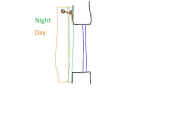
 2
2




Learn more about my book and my podcast at buildingabetterworldbook.com.
Developer of the Land Notes app.




 2
2




I make a Maple Syrup instructional movie! Check it out HERE
SKIP books, get 'em while they're hot!!! Skills to Inherit Property
See me in a movie building a massive wood staircase:Low Tech Lab Movie




Be the shenanigans
you want to see in the world.


 1
1





 1
1








Shawn Klassen-Koop wrote:
1. Conduction occurs when two objects are physically touching. This is the most efficient form of heat transfer.
A piece of land is worth as much as the person farming it.
-Le Livre du Colon, 1902









 1
1




Garden Master Program video course and ebook guide

|
Get out of my mind! Look! A tiny ad!
The new purple deck of permaculture playing cards
https://www.kickstarter.com/projects/paulwheaton/garden-cards
|




